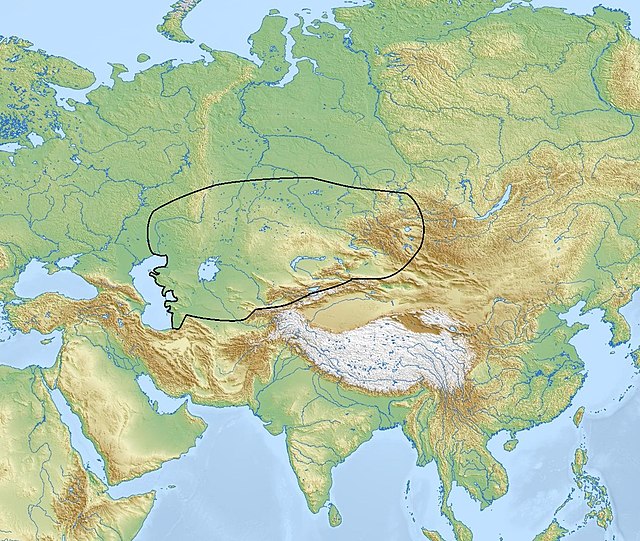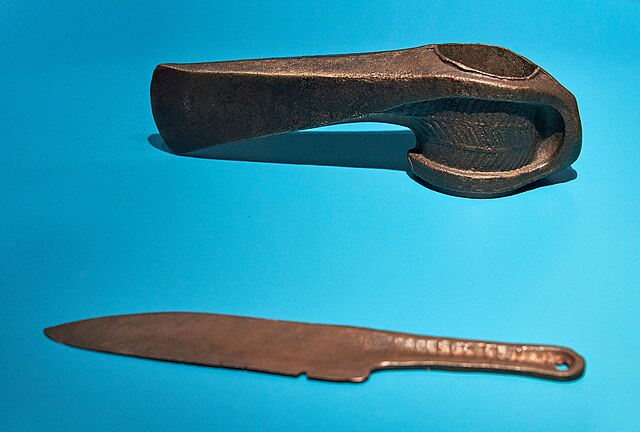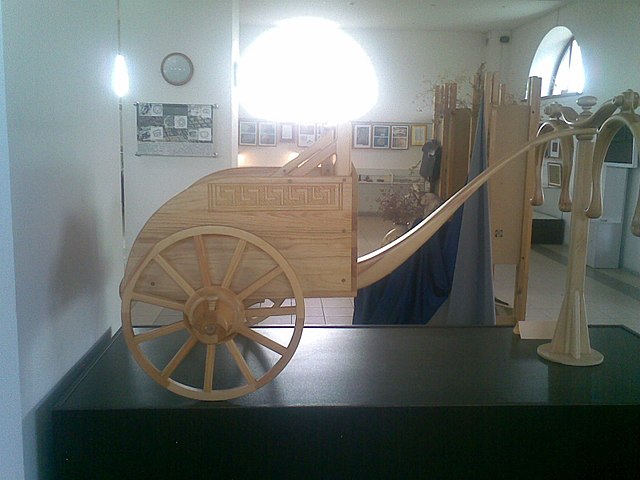The Tazabagyab culture is from the late Bronze Age, ca. 1850 BC to 1500 BC, and flourished in the lower Zeravshan valley, as well as along the lower Amu Darya towards the south shore of the Aral Sea; this last region is known as Khwarazm or Khorezm. Earlier it was thought to be from ca. 1500 BC to 1100 BC and regarded a southern offshoot of the Andronovo culture, composed of Indo-Iranians, but Stanislav Grigoriev, in a recent study asserts that Tazabagyab is not part of the Andronovo cultural horizon.
Tazabagyab culture
The Andronovo culture is a collection of similar local Late Bronze Age cultures that flourished c. 2000–1150 BC, spanning from the southern Urals to the upper Yenisei River in central Siberia. Some researchers have preferred to term it an archaeological complex or archaeological horizon. The slightly older Sintashta culture, formerly included within the Andronovo culture, is now considered separately to Early Andronovo cultures. Andronovo culture's first stage could have begun at the end of the 3rd millennium BC, with cattle grazing, as natural fodder was by no means difficult to find in the pastures close to dwellings.
Andronovo culture
Andronovo axe and knife
Chariot model, Arkaim museum
Reconstruction of an Andronovo burial. Lisakovsk Museum





